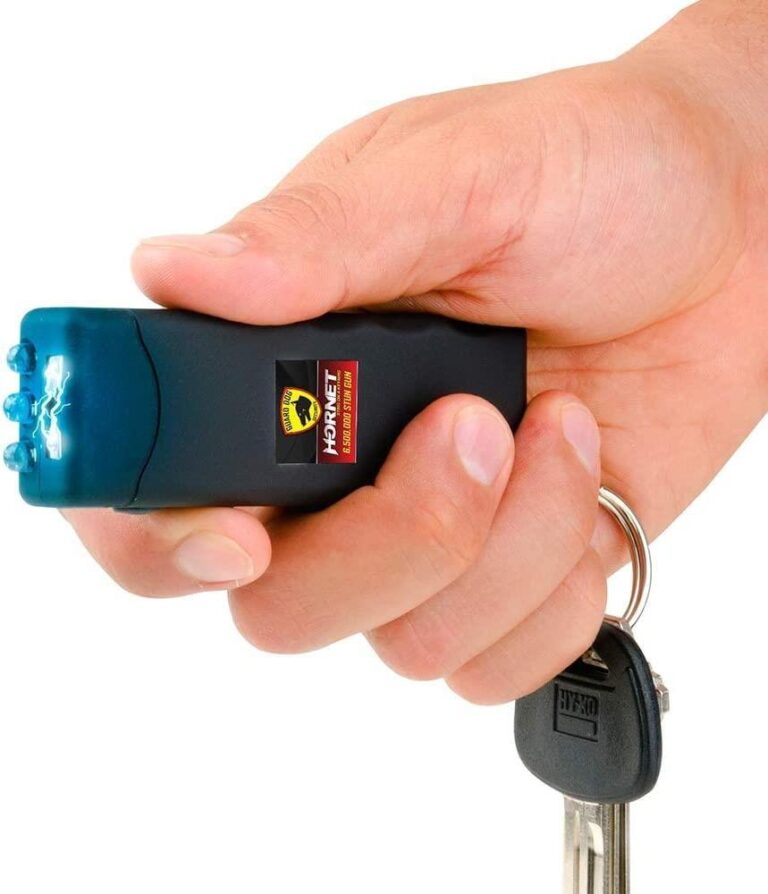Table of Contents
- Understanding the Environmental Impact of Stun Gun Batteries
- Identifying the Correct Disposal Methods for Used Stun Gun Batteries
- Step-by-Step Guide to Preparing Stun Gun Batteries for Safe Disposal
- Locating Authorized Battery Recycling Centers and Collection Programs
- The Conclusion
Understanding the Environmental Impact of Stun Gun Batteries
The batteries used in stun guns, often lithium-ion or alkaline, contain hazardous materials that can pose significant threats to the environment if not disposed of correctly. When these batteries end up in landfills, harmful chemicals can leach into the soil and groundwater, contaminating ecosystems and jeopardizing public health. Additionally, the extraction and manufacturing processes for battery components contribute to carbon emissions and resource depletion, making responsible disposal a critical step in reducing the overall environmental footprint of stun gun use.
To mitigate these impacts, it’s essential to adhere to safe disposal practices that prevent toxic substances from entering the environment. Consider the following actions:
- Use designated battery recycling programs to ensure batteries are processed at facilities equipped to handle hazardous waste.
- Avoid throwing used batteries in regular trash bins, which can lead to fires or chemical leaks.
- Check local regulations and hazardous waste collection sites-many communities offer special days or locations for battery recycling.
- Store depleted batteries safely until they can be recycled, keeping them away from metal objects to prevent short-circuits.
Identifying the Correct Disposal Methods for Used Stun Gun Batteries
When it comes to disposing of used stun gun batteries, understanding the appropriate methods is crucial for both safety and environmental responsibility. These batteries often contain hazardous materials like lithium or nickel-cadmium, which require careful handling to avoid contamination or accidents. The first step is to never discard them with regular household trash, as this can lead to chemical leakage or even fire hazards in waste management facilities. Instead, seek out specialized recycling centers or hazardous waste disposal programs that accept electronic or rechargeable batteries.
To make the process easier, many cities and retailers provide convenient drop-off points. Here are some effective options to consider:
- Local hazardous waste collection events organized by municipalities
- Rechargeable battery recycling kiosks at electronics stores or big-box retailers
- Mail-in recycling programs offered by battery manufacturers or third parties
Step-by-Step Guide to Preparing Stun Gun Batteries for Safe Disposal
Before disposing of stun gun batteries, it’s crucial to prepare them properly to prevent any environmental hazards or safety risks. Begin by disconnecting the battery fully from the device, ensuring it is completely powered off. Use insulated gloves to handle the battery to avoid any accidental shocks. Next, inspect the battery for any signs of damage such as leaks, swelling, or corrosion, as these require special handling and should not be disposed of with regular waste. If the battery appears compromised, contact your local hazardous waste facility for customized disposal instructions.
Once safety checks are complete, follow these steps to prepare the battery for recycling or disposal:
- Cover the battery terminals with non-conductive tape (e.g., electrical tape) to prevent any short circuits.
- Place the battery in a sturdy, clear plastic bag or a dedicated battery storage container to avoid contact with other metals or batteries.
- Label the bag or container if required by your local disposal guidelines.
- Locate the nearest certified battery recycling center or hazardous waste collection point to drop off your prepared battery safely.
Following these meticulous preparation steps not only ensures your safety but also contributes to environmentally responsible disposal practices.
Locating Authorized Battery Recycling Centers and Collection Programs
Finding the right place to dispose of stun gun batteries responsibly is crucial to preventing environmental harm. Start by checking with your local waste management authority, as many municipalities offer battery recycling programs or can direct you to nearby authorized collection points. Retailers specializing in electronics, particularly those selling stun gun products, often provide take-back services. Additionally, some national organizations maintain directories of approved recycling centers-using these resources ensures your batteries are processed according to safety standards.
When searching for a recycling center, keep these tips in mind to streamline the process:
- Verify credentials: Make sure the facility is certified to handle hazardous materials, including lithium or rechargeable batteries commonly found in stun guns.
- Inquire about drop-off options: Some centers might require appointments or have specific drop-off hours.
- Ask about collection programs: Many areas run periodic collection events for hazardous waste, including batteries, making it easier to dispose of them safely.
The Conclusion
Properly disposing of used stun gun batteries is essential not only for your safety but also for the well-being of our environment. By following the guidelines outlined above-such as locating designated battery recycling centers, avoiding regular trash disposal, and handling batteries with care-you can minimize harmful impacts and contribute to responsible waste management. Remember, taking a few extra steps to dispose of your stun gun batteries correctly helps ensure that hazardous materials are kept out of landfills and recycled whenever possible. Stay informed, stay safe, and make eco-conscious choices that protect both you and the planet.Check Our Other Blogs
- StunGun – Your Trusted Source for Stun Guns, Laws, and Self-Defense Tips
- PepperSprayLaws – Your Trusted Resource for Pepper Spray Information
- StunGunLaws – Your Trusted Guide to Stun Gun Legality and Safety





